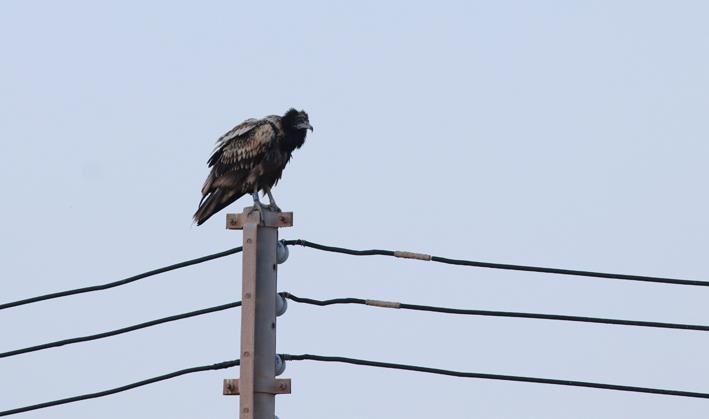A rare Egyptian Vulture (Avultun Abjad) from an Italian conservation reintroduction programme in Italy yesterday landed in the south of Malta, BirLife said in a statement.
The vulture is being tracked for its movements thanks to a satellite tag. BirdLife Malta requested police protection round the clock for the bird and kept watch on the bird yesterday and during the night at the site where it roosted in Qrendi.
ALE police units returned this morning, with the bird taking off to hopefully continue its migration.
The vulture’s name is "Leonardo" and it was released in early August at Parco della Murgia Materna (Matera), Basilicata, as part of the LIFE Egyptian Vulture project.

Photo Aron Tanti
Another Egyptian Vulture from a similar programme had briefly visited Malta four years ago. It was in September 2015 when the satellite-tagged bird, nicknamed "Tobia", spent a night on Malta being guarded by BirdLife Malta and the police.
Egyptian Vultures (Neophron percnopterus) are highly-protected birds, and are classified as “Endangered” on the IUCN Red List of Threatened Species. They are large birds of prey, with a wingspan of over 150cm. These rare birds are endangered in Europe and they are on the verge of extinction. The Italian conservation programme to which this bird belongs aims to increase their numbers by breeding vultures in captivity and releasing them into the wild.
The Egyptian Vulture also happens to be one of the seven species whose epic migratory journey is being followed by BirdLife Europe and Central Asia's #FlightForSurvival campaign. This bird is Europe’s only long-distance migratory vulture. Flying up to 640 km per day, it can travel 5,000 km when migrating between its European breeding sites and its wintering grounds at the southern edge of the Sahara. It is celebrated in the folklore of many cultures, having been admired throughout history for its intelligence, striking yellow face and white plumage. The ancient Egyptians worshipped it as a symbol of the goddess Isis and immortalised its silhouette as a hieroglyph in their writing.